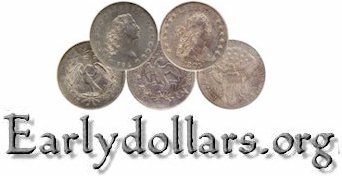

|
Overview: Predecessors To Early Dollars |
|
|
The first circulating silver coins minted under the authority of the United States were struck in the year 1794. Prior to that time, the people of our young country had to rely upon the limited coinages of the individual colonies or coins brought in from other countries. Perhaps the most popular of these were the silver dollar sized Spanish Eight Reales, variously called Spanish Milled Dollars, Pillar Dollars, or Pieces of Eight. These were the first dollar-sized silver coins to be widely used in the United States, and were given status as legal tender by the United States government. The popular “Pillars of Hercules” design on the obverse of these coins was used by multiple mints under Spanish authority from 1732 to 1772, and it is this design that was the origin of our current dollar sign ($) symbol. These coins were so universally accepted in the United States that they continued to be recognized as legal tender all the way through the year 1857. As the United States declared its independence from other countries in 1776, a new concept was developed for America’s dollar coinage — a prototype often referred to as the “Continental Dollar.” Produced in small quantities during 1776 only, specimens of the Continental Dollars are known in several varieties, and were struck in brass, silver, and (primarily) pewter. Following key victories in the American Revolutionary War, statesman and foreign ambassador Benjamin Franklin had the idea of producing medals to commemorate the events. He traveled to France to commission noted French sculptor Augustin Dupre for the task. The engravings were prepared, and finally the medals were struck in Paris, France in 1783. Specimens of the medal are thought to have been presented to, and received with great appreciation by, the members of the Continental Congress. To this day, the Libertas medal is generally considered to be the most beautiful of all of the early colonial commemorative medals. Not surprisingly, when official mint operations began in Philadelphia in 1793, the early mint engravers adapted this Flowing Hair design for the new coinages of the United States. The Mint commenced production in 1793 with the copper denominations (half-cent and one-cent pieces), and then started minting the first silver coins in 1794. It was then that engravers produced the first official pattern for early silver dollars. This design followed the Libertas medal, with an emblematic portrait of Lady Liberty on the obverse, facing toward the right, with her hair flowing freely toward the left. Similar to the copper coinage of 1793, the obverse of the 1794 pattern dollar bears no stars. It is thought that this pattern was reviewed by President George Washington himself, among others. Following comments, the design was changed to include 15 stars encircling the obverse (one for each of the 15 states that had joined the Union at the time), and production of the first true silver dollars of the United States began.
|
|